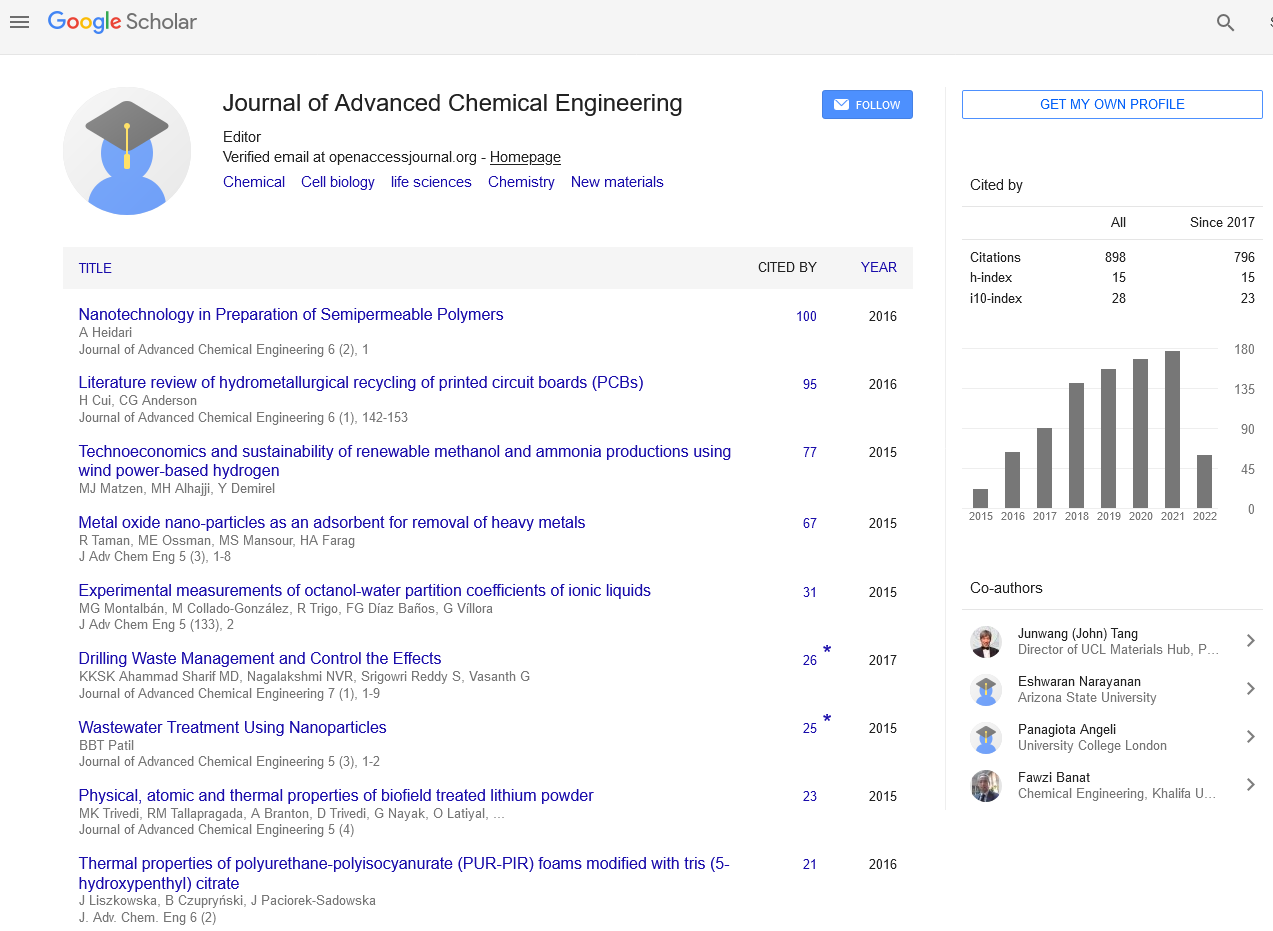Indexed In
- Open J Gate
- Genamics JournalSeek
- Smithers Rapra
- RefSeek
- Directory of Research Journal Indexing (DRJI)
- Hamdard University
- EBSCO A-Z
- OCLC- WorldCat
- Scholarsteer
- Publons
- Geneva Foundation for Medical Education and Research
- Google Scholar
Useful Links
Share This Page
Journal Flyer

Open Access Journals
- Agri and Aquaculture
- Biochemistry
- Bioinformatics & Systems Biology
- Business & Management
- Chemistry
- Clinical Sciences
- Engineering
- Food & Nutrition
- General Science
- Genetics & Molecular Biology
- Immunology & Microbiology
- Medical Sciences
- Neuroscience & Psychology
- Nursing & Health Care
- Pharmaceutical Sciences
Abstract
A Comparative Study of Physical and Chemical Method for Separation of Benzoic Acid from Industrial Waste Stream
Phthalic anhydride is manufactured by the partial oxidation of ortho xylene in the presence of V2O5/TiO2 catalyst. In the residue, maleic acid, benzoic acid (BA), telluric acid and traces of other organic compounds are present in the by-product stream. There is almost 60% of (BA) in the residue sample, which compels to recover the tremendous amount of (BA), as it is of great importance. The waste stream is in the form of slurry at high temperature and is solidified at room temperature. Benzoic acid was selectively removed from the solid waste of Phthalic anhydride production industry by the processes associated with less intensive parameters as compare to the extraction techniques achieved by, pressurized hot water, supercritical CO2 extraction, where the required parameters are highly intensive. The separation has been performed by using physical and chemical techniques. In physical methods recrystallization (RE), liquid-liquid extraction (LLE) as well as recrystallization followed by liquidliquid extraction (RE, LLE) and liquid-liquid extraction followed by recrystallization (LLE, RE) have been studied. In another attempt chemical derivatization (CD) has been performed for the purification purposes. The operation has been performed at the atmospheric pressure with operating temperatures of 100°C and 25°C in physical processes (RE) and (LLE) respectively while in chemical derivatization it ranges from 72°C to 100°C. The characterization of the samples was accomplished by GCMS, FTIR and also its melting point was determined. Almost 99% of the purity was achieved by CD, LLE, RE followed LLE and LLE followed by RE.


